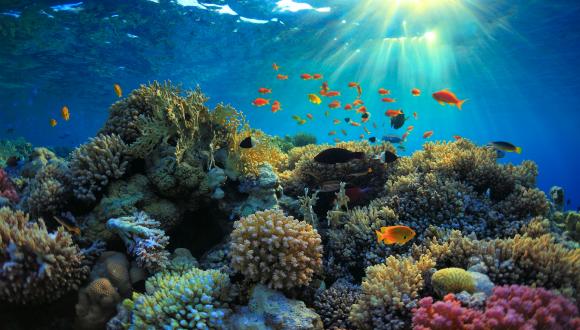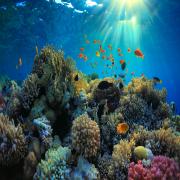The impact of light pollution on coral reefs
In collaboration with Prof. Oren Levi, Faculty of life science, Bar-Ilan Univesity
In collaboration with Prof. Oren Levi, Faculty of life science, Bar-Ilan Univesity
Artificial light at night is one of the anthropogenic pollutants that influences many organisms on land and in the aquatic environment, this research show for the first time the impact of ALAN (Artificial Light at Night) on coral reproduction. The sources of artificial light at night in marine environments comes from building, streetlight, ports, piers, and oil rig, this interferes with the natural light cycles of the moon and the stars that are critical for marine organisms' behavioral, physiological and biological processes. The timing of broadcast or brooder spawning corals for releasing sperms, eggs, or planula plays a major role in fertilization success or settlement.
The objective of this study was to understand if ALAN with two different spectrums would affect the timing of spawning in corals.
Link to our paper in Current Biology
https://www.sciencedirect.com/science/article/pii/S0960982220315827
To determine the impact of ALAN on coral reef symbiotic algae we illuminated two species of isolated symbiodiniaceae cell cultures from the genera Cladocopium (formerly clade C) and Durusdinium (formerly clade D) with led light. Cell cultures were exposed nightly to ALAN levels of 0.15 μmol quanta m–2 s–1 (∼4–5 lux) with three light spectra: blue, yellow, and white. Our findings showed that even in very low levels of light at night, the photo-physiology of the algae’s Electron Transport Rate (ETR), Non-Photochemical Quenching, (NPQ), total chlorophyll, and meiotic index presented significantly lower values under ALAN, primarily, but not exclusively, in Cladocopium cell cultures. The findings also showed that diverse Symbiodiniaceae types have different photo-physiology and photosynthesis performances under ALAN. We believe that our results sound an alarm for the probable detrimental effects of an increasing sensory pollutant, ALAN, on the eco-physiology of symbiotic corals. The results of this study point to the potential effects of ALAN on other organisms in the marine ecosystems such as fish, zooplankton, and phytoplankton in which their biorhythms are entrained by natural light and dark cycles.
Next, I will 1) measure stable isotopes of N15 and C13 in corals under light pollution. The aim is to understand if light pollution can affect corals' nutrition between autotrophs to heterotrophs.
2) Examine the effect of light pollution on coral reef sex steroid hormones E2.



